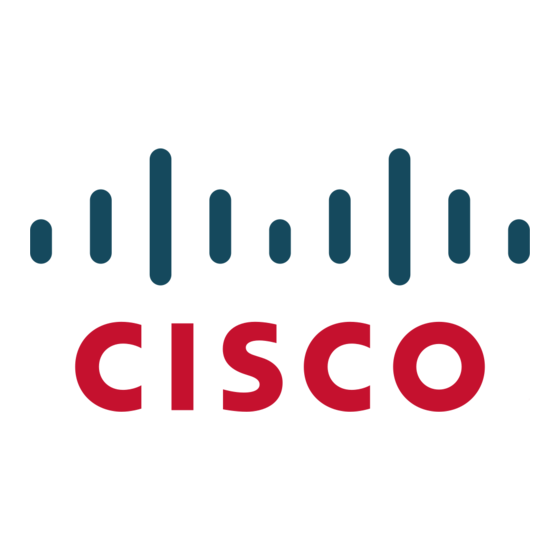Table of Contents
Advertisement
Quick Links
Quick Start Guide for Cisco Digital Media
Encoder 1100
Revised: OL-17934-01, November 10, 2008
There are four requirements for setting up Cisco Digital Media Encoder 1100 for streaming or capturing
video, as follows:
•
AC power source (100~240v)
•
Audio/Video source (camera, video player, or other A/V output device)
IP network and/or Internet connection
•
First Start setup
•
Most of the basic operations you will routinely use are performed from the front panel of the encoder,
shown in
Figure
1.
Figure 1
Front Panel.
Americas Headquarters:
Cisco Systems, Inc., 170 West Tasman Drive, San Jose, CA 95134-1706 USA
Advertisement
Table of Contents

Summary of Contents for Cisco Cisco Aironet 1100
- Page 1 • Most of the basic operations you will routinely use are performed from the front panel of the encoder, shown in Figure Figure 1 Front Panel. Americas Headquarters: Cisco Systems, Inc., 170 West Tasman Drive, San Jose, CA 95134-1706 USA...
- Page 2 Connecting to an Electrical Power Source There are advanced setup options of the encoder that you will need to modify before running an encoder Note session. You will use the Niagara SCX® Web Interface to access these options. Refer to the User Guide for Cisco Digital Media Encoder 1100 for detailed instructions.
- Page 3 Connecting Audio and Video Sources Table 2 show the audio and video sources on the rear panel of the encoder. Three BNC-to-RCA adapters are included with your encoder. This will convert the Component and Note Composite BNC connectors to a common RCA connector found on most consumer video cameras and video players.
- Page 4 Connecting to an IP Network Table 2 Analog Inputs—Audio Unbalanced Audio Input Balanced Audio Input Connecting to an IP Network The encoder provides two network 1 Gigabit Ethernet network connections are also referred to as output connectors because the encoder sends video and audio over an IP network, which these connections provide.
- Page 5 Completing First Start Setup The first time the encoder is powered, the LCD display will present a series of menus that will assist in setting up the system clock, date, and video input format (NTSC [North America/Japan] or PAL). Table 3 lists and describes the buttons on the front panel of the encoder that you will use to complete the first start setup.
- Page 6 Completing First Start Setup To set the date, use the <UP> and <DOWN> arrow keys to increment the numerical value of the month. Once you set the numerical value for the month, press the <STREAM> button to move to the day field.
-
Page 7: Obtaining Documentation And Submitting A Service Request
Registrar, Aironet, AsyncOS, Bringing the Meeting To You, Catalyst, CCDA, CCDP, CCIE, CCIP, CCNA, CCNP, CCSP, CCVP, Cisco, the Cisco Certified Internetwork Expert logo, Cisco IOS, Cisco Press, Cisco Systems, Cisco Systems Capital, the Cisco Systems logo, Cisco Unity, Collaboration Without Limitation, EtherFast, EtherSwitch, Event Center, Fast Step, Follow Me Browsing, FormShare, GigaDrive, HomeLink,... - Page 8 Quick Start Guide for Cisco Digital Media Encoder 1100 OL-17934-01...






Need help?
Do you have a question about the Cisco Aironet 1100 and is the answer not in the manual?
Questions and answers